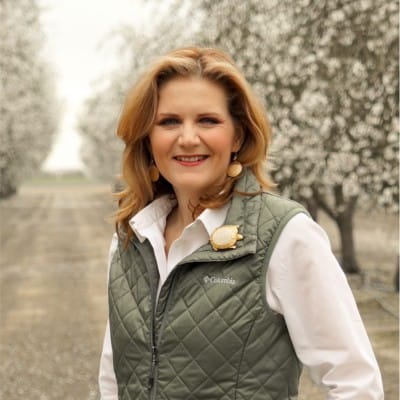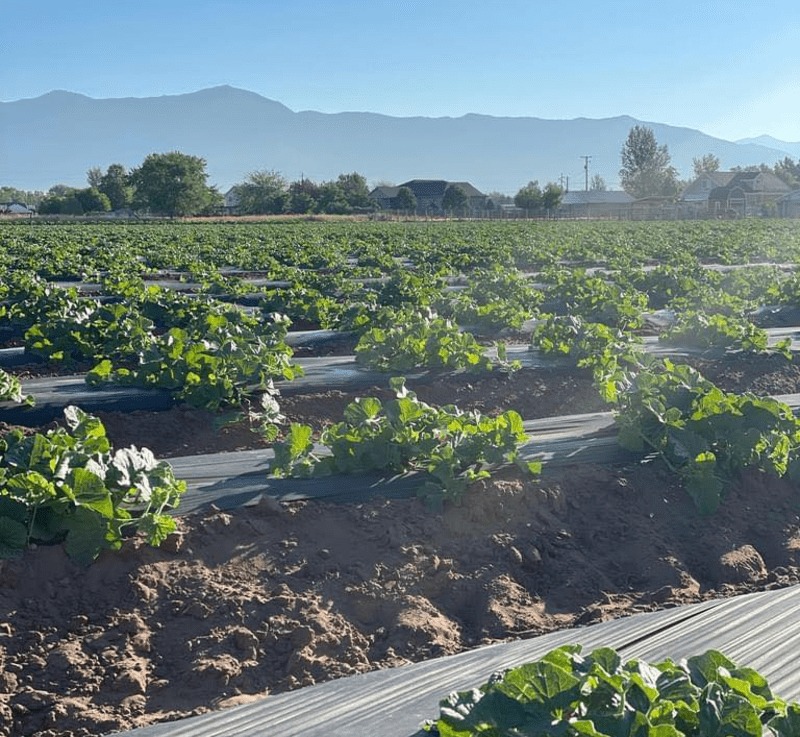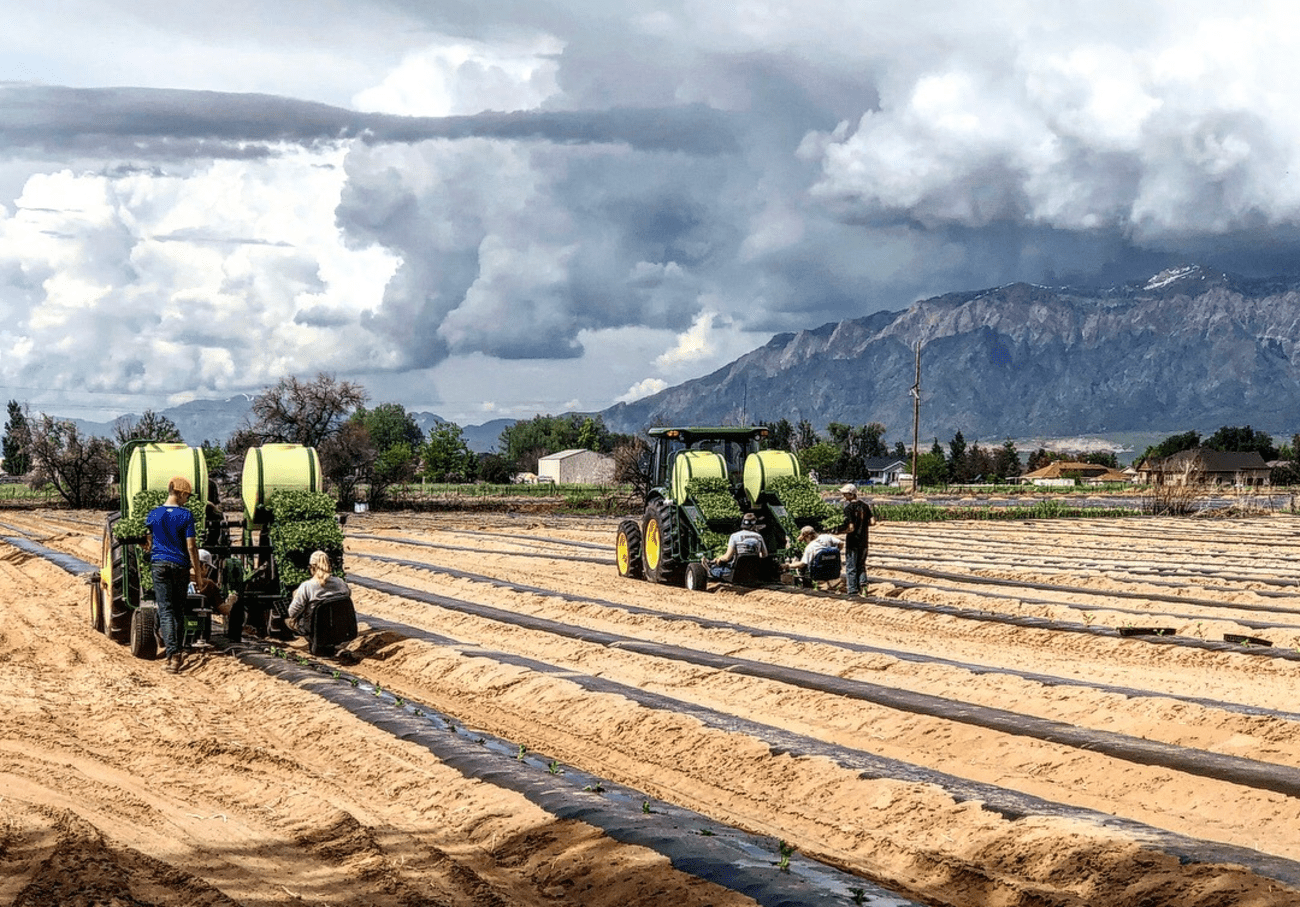In Utah, agriculture and ranching use 61.5 percent of the available water. Much of this water comes from the Colorado River basin, which is projected to be far from sufficient to meet rising water demands in the coming years.
Regulators are pushing for a drastic reduction in water use, a measure that puts the region’s farms at risk. To help farmers, Netafim, a leading Tel Aviv-based agritech company that has pioneered the use of precision irrigation, including drip irrigation, has set up a local resource center to provide farmers with the financing options and information they need to succeed despite potential water restrictions.
Drip irrigation, including subsurface drip irrigation, has become increasingly common throughout Utah in recent years. Many Utah farmers and homeowners have switched to this solution for efficiently watering plants and crops.
Matt Peterson, a fifth-generation Utah farmer with 170 acres of land in West Ogden, Ogden Bay Produce, told TechBuzz he sees “a 70% reduction in water use, depending on the crop, while increasing yields thanks to direct irrigation to the roots of the plants.”
He attributes the significant improvement in water use to Netafim’s drip irrigation, which allows him to save water while “applying fertilizer to the plants weekly, saving the farm 15 to 20 percent in fertilizer costs. That’s a huge improvement,” Peterson says.
Netafim is an Israeli agricultural technology company founded in Kibbutz Hatzerim, a collective and targeted farming community established in 1946 in Israel’s southern Negev desert. Out of necessity, Netafim invented the concept of drip irrigation over five decades ago. Its technology has been refined and used around the world. As the largest “precision irrigation” company in the world, with manufacturing facilities in Europe, Asia and Latin America, Netafim supplies farmers like the Petersons in Ogden with technology that can apply water “in the right place and at the right time,” said Aubrey Bettencourt, Netafim’s global director of government relations and external affairs.

“The idea is to match the chemistry and biology of the plant with the irrigation technology to maximize its efficiency,” explained Bettencourt.
Each crop type has different irrigation needs. Almonds, for example, have a shallow but wide root zone. Bettencourt said, “In this case, a micro-sprinkler that precisely waters the surface of the root zone makes sense. We have other technologies, like drippers, that work well with grapevines. Our focus here in Utah, where we see a lot of potential and a lot of interest from the state, is subsurface drip irrigation, which works well with specialty crops and high-value vegetables like those grown on Peterson’s farm, Ogden Bay Produce.”

Peterson explains that subsurface drip irrigation is an effective system because it saves a lot of water and benefits the plants. However, the upfront costs are significant. “I probably had to invest close to $100,000 in pumping equipment because of the pressurization. Next, filtration is required because we use an open channel system. I’ve invested another $100,000 in filtration equipment over time.”
“However, once the system is up and running, the annual investment is much less. We replace the tape every year; it’s made of plastic resin and only costs about $100 per year per acre. There’s a lot of manual labor involved to pull up the beds, pull up the drip irrigation and fill everything to start over next spring, but that’s to be expected,” Peterson said.
Netafim recognized that cost is the barrier to getting started with drip irrigation, so it has set up a comprehensive resource center to help farmers with water constraints and the upfront costs of installing drip systems. “Netafim offers farmers the ability to collect their own information about water use: how they use it, when they use it, how it is managed, so they can use that data for their own purposes,” Bettencourt said. Netafim has signed a memorandum of understanding with the state of Utah to introduce precision irrigation technology in Utah because its climate is similar to that of Israel.
In the area of residential water conservation, xeriscaping is on the rise in Utah. The term xeriscaping, coined by the Denver Water Department in 1981, aims to create beautiful gardens using an environmentally friendly and water-saving method.
Utah-born brothers Rodrigo and Roberto Vega are a pioneering duo at the forefront of the xeriscaping industry with their Salt Lake City-based company, Utah Wildflower Co.

The Vega brothers explained, “Landscaping used to be primarily about appearance, with little regard for the environment or water usage. Now, with xeriscaping, we have been able to combine functionality with something that looks pleasant and doesn’t require a lot of water. Using native plants from local nurseries, we can create something that makes sense for the homeowner, the state and the environment.”

Specifically, “Using drip irrigation in an average 93 square meter garden can reduce water consumption by 30 to 40% per month, which equates to annual savings of about $200. Installation costs between $500 and $1,500 if the previous traditional sprinkler system has PVC pipes, so the investment pays for itself in a few years. The only maintenance is the filters, which cost a few dollars,” added Rodrigo Vegas. “We are not aiming for a monopoly; we want to inspire. The more we see of it, the more we like it.”
The brothers are not alone in their efforts.
According to Craig W. Buttars, commissioner of the Utah Department of Agriculture and Food, the agency’s Agricultural Water Optimization Program has experienced steady growth year after year.

“The state legislature has approved about $375 million for water optimization measures, direct irrigation and flood irrigation. Producers can receive up to 75% subsidy. I was pleasantly surprised by the number of applications we received for drip irrigation projects, as it is still a new technology,” the commissioner said.
He added: “Initially, the program focused on reducing water diversion for agriculture. But as the program progresses, we are focusing more on depletion – that is, water that is used and not returned to the system.”
Although the program provides critical funding for farmers and ranchers, it is still relatively new, having only been launched in 2019. There is a lag between implementation and measurement. Buttars elaborated on this point: “The most important action we need to take to improve water supplies is to measure depletion. Utah State University is researching this issue, but currently we don’t have a good way to actually measure depletion. That’s a big challenge,” said Commissioner Buttars.
“We are working to compile data for each irrigation system. At the end of this irrigation season and certainly by the end of the year, we will have more data available,” concluded Commissioner Buttars.
Click here for more information about Utah’s water optimization programs for agricultural, commercial and residential applications.
Share article




:quality(85):upscale()/2024/08/15/891/n/1922729/f1d0222466be63a7166ec3.10501518_.jpg)
